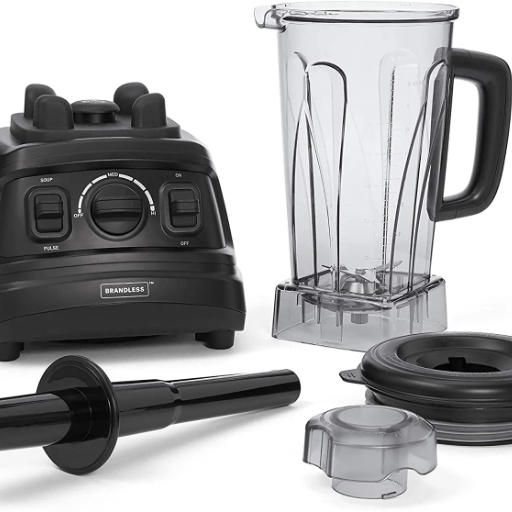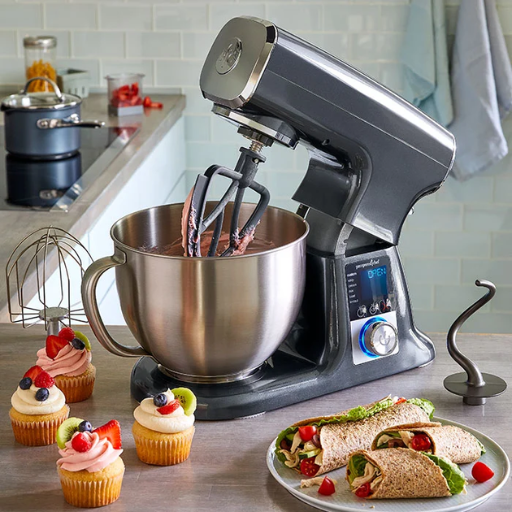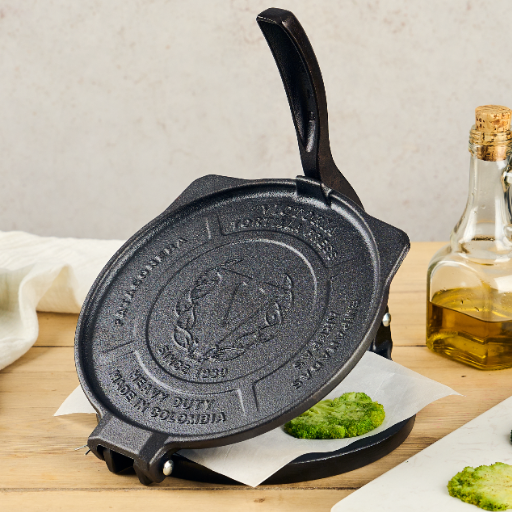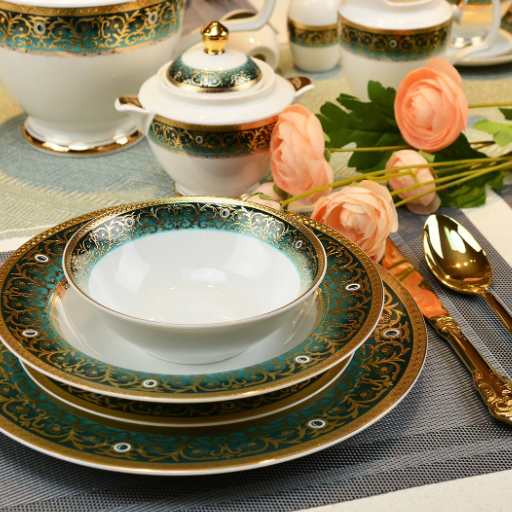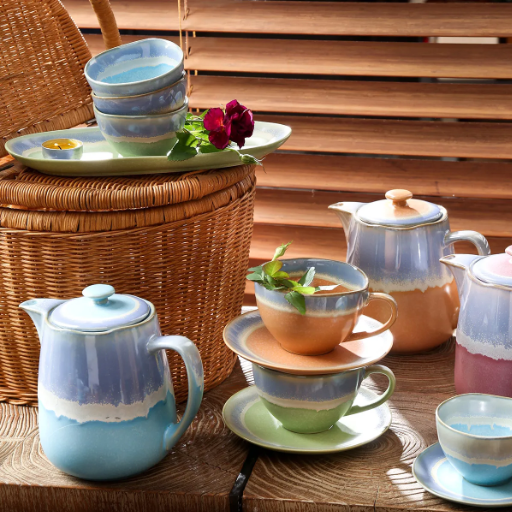Ceramic and porcelain teapots have long commanded the respect of retailers and caterers alike, primarily because they marry lasting strength with a polished look. A well-made pot does more than pour it holds its own as a visual anchor on any table. The following paragraphs will outline the specific advantages these materials offer in a wholesale context, from resistance to chipping to the ease of seasonal restocks. Shoppers chasing fresh merchandise or brands curating signature collections should find the pointers here useful for pinning down the ideal tea set.
What Are the Benefits of Wholesale Teapots?
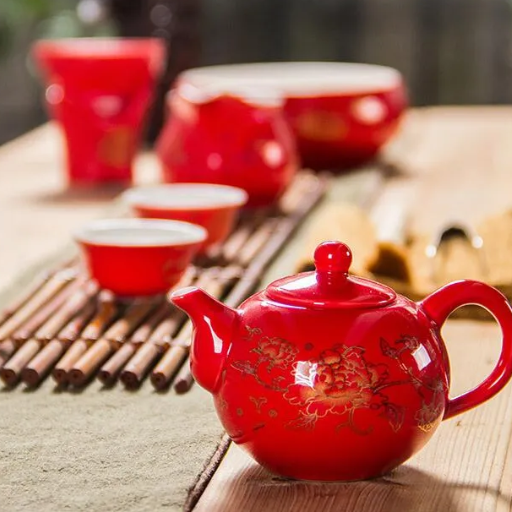
Buying teapots by the case can shave as much as thirty percent off the retail price, giving shop owners a much wider cushion for profit. Almost every wholesale distributor also lays out dozens of styles, clays, and glazes side by side, so merchants can fill the odd orders that pop up without waiting for a special run. Stock that moves in bulk usually arrives on schedule, which spares the buyer from the last-minute panic of empty shelves. Lastly, many import houses will imprint a store logo or slap on a signature motif, letting the merchandise speak the brands name even before it leaves the counter.
Why Choose Ceramic Teapots for Your Business?
Hospitality professionals often gravitate toward ceramic teapots because the material excels at holding heat once it has been poured. This quality means black tea, oolong, or even delicate green brews stay warm long enough for patrons to enjoy a leisurely sip without a chill setting in. High-fired stoneware is also non-porous, so leftover aromas and residues do not seep into the clay; the result is an untainted flavor profile that suits repeated service of very different blends. Visually, ceramics offer enormous variety an establishment can place a hand-glazed, cobalt blue Yixing beside a sleek white contemporary pot without discord. Investment longevity matters to operators, and the finish scratches less easily than many metals, curbing the long-term expense of replacements. Buyers increasingly reward businesses that showcase craft, so opting for handmade or locally made pieces can strengthen a brand narrative while keeping pace with consumer demand for artisanal goods.
How Does Wholesale Pricing Work for Tea Pots?
Wholesale pricing for teapots is rarely left to chance. A tiered schedule-pinches, usually, small, medium, and large-lines up the cost per piece and nudges buyers toward bigger carts. Higher turnover pleases the supplier, a thicker margin slices candy for the store owner, and everyone shrugs off the upsell as ordinary trade business. Raw clay, firing temperature, stamped monograms on the spout these quirks sneak into the calculator and push the needle up or down. Ceramics cut from a slick white stoneware slab may swing one way, while hand-painted folklore scenes tug the other. Last, the paperwork usually bricks in an MOQ to dodge dead-stock headaches, spells out freight duties, and dangles extra discounts for the shopper who promises to come back next month.
How to Choose the Right Teapot for Your Tea Set?
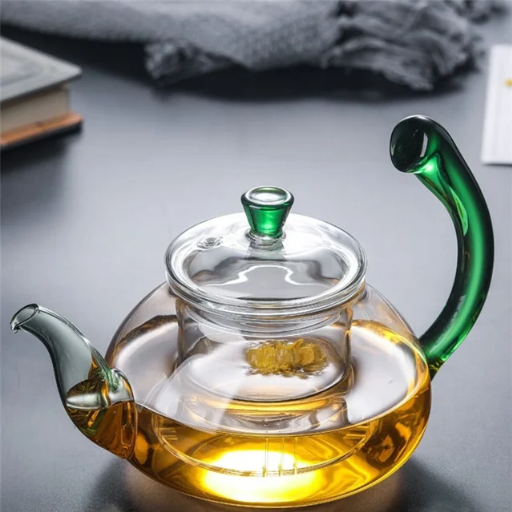
Sifting through options for a new teapot usually begins with the basic ingredients: material, size, and overall look. Ceramic and porcelain hold heat nearly flawlessly, and many enthusiasts swear the cups taste brighter from either of them. Glass, transparent and almost theatrical, puts the brewing drama on full display. Moving on to dimensions, a two-cup pot works for solitary steeping, while a roomy nine-cup vessel makes sense only when visitors settle around the table. The last choice is purely personal; an elegant dragon motif might charm one drinker, yet another may prefer matte black utilitarianism.
What Design Features Should You Look For?
- Spout and Pouring Precision
An effective pouring spout is one that delivers tea smoothly while leaving the rim tidy. Curved, well-angled openings paired with a diameter wider than the kettle neck tend to improve flow control. Researchers have noted that this geometry curbs the annoying drip that can otherwise trail down the side.
- Handle Ergonomics
A balanced handle feels secure in the hand and permits gradual, deliberate motion. If the plastic soften under heat, a bamboo or silicone sleeve can insulate against surprise burns.
- Lid Fit and Seal
Brews depend on keeping steam and scent under cover, so the lid needs a snug fit. Designers often include a small vent hole to relieve pressure without lifting the top.
- Infuser or Strainer
Loose-leaf aficionados appreciate built-in strainers that catch errant fragments mid-pour. Stainless sleeves or fine wire mesh keep even the tiniest pieces contained while permitting unfettered infusion.
- Material Versatility
Glass blown from borosilicate, brushed stainless, and high-fired ceramic all shrug off temperature swings. These materials resist staining, odor retention, and cracking long enough to justify a place on the shelf.
Consider how the teapot will fit into your daily routine before committing to a purchase; comfort in pouring, ease of cleaning, and plain old good looks matter. A smart selection turns what could be a passing kitchen gadget into a reliable companion for your strongest brews.
Is Porcelain or Ceramic Better for Tea Pots?
Porcelain and stoneware sit at opposite ends of the heat and clay spectrum, yet both show up under the general heading ceramic. The heavier stoneware absorbs heat slowly and keeps it steady, while porcelain takes a blast of high heat that tempers the clay and locks the moisture out. Because the latter retains nothing it brews, the next cup tastes like nothing but the tea leaves you drop inside.
Thicker-walled ceramic teapots, in contrast, boast a hefty thermal mass that holds heat like a cast-iron pan. That steady warmth is a blessing for black or herbal brews demanding an unflinching steeping temperature. Glaze quality can muddy the picture, since a porous finish may trap stray flavors from yesterday’s chamomile or last month’s lapsang. Personal habits and eye for craft still drive the final pick, whether one gravitates toward porcelain’s delicacy or stoneware’s rugged charm.
Where to Find the Best Wholesale Tea Pots?
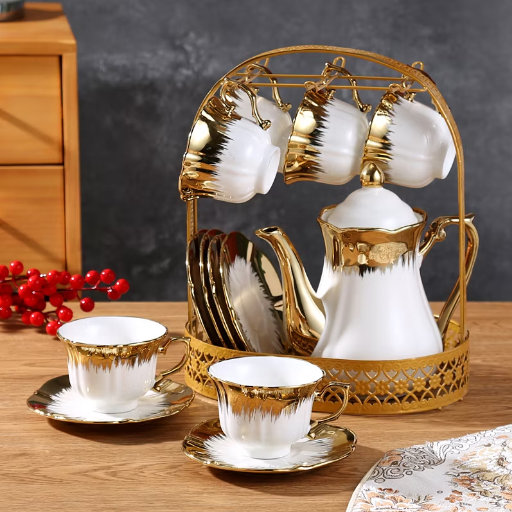
Finding bulk teapots that won’t let a shopkeeper down usually begins with a little web digging. Places like Alibaba, DHgate, and Faire post widths of ceramic, glass, and cast-iron wares, often alongside factory inspection numbers. Wholesalers such as Teaware House or Umi Tea Sets keep narrow catalogs devoted just to tea, and in-person meet-ups at Specialty Coffee Association shows can put a kettle in hand and a face behind the name. Rating stars matter, of course, but so do clear price lists, reasonable minimums, and shipping windows that dont stretch a delivery date into next season.
Which Online Stores Offer Competitive Prices?
While browsing the web for reasonably priced teaware, a handful of shops consistently earn customer praise. Teaware House, for example, frequently slashes prices on bulk buys and rolls out seasonal sales that appeal to both casual drinkers and small retailers. Over at Umi Tea Sets, shoppers discover a straightforward pricing layout and regular discounts on handmade pieces that artisans know well. If variety is the main goal, Yixing Marketplace lists countless items across every imaginable price bracket, sometimes absorbing part of the shipping cost for overseas buyers. TeaVivre regularly bundles its products, allowing frequent purchasers to leave the checkout page with savings that show up right away. Shoppers like these sites not merely for the dollars saved; the dependable shipping history and crowd-sourced reviews help build trust.
How to Evaluate a Wholesale Tea Products Supplier?
Finding a dependable wholesale tea supplier takes more than a quick search; the decision usually shapes a buyers sourcing strategy for months or even years. First on most checklists is proof of certification-something like USDA organic or Fair Trade seals that signal the leaves were grown and handled to recognized benchmarks. Suppliers willing to disclose where their teas come from, and how the processing chain works, tend to place value on both transparency and long-term sustainability, a trait that importers watch closely.
The product range must be the first checkpoint. A credible supplier keeps not just he regulars but also seasonal flushes and niche releases on hand. The supply chain stays smooth if those lines are in bulk when requested.
Logistical muscle comes next. Ask about lanes, transit clocks, and the packing craft. Clear routes and sturdy cartons cut losses and keep shipments on track.
Customer chatter rounds out the picture. Scan reviews, pull a few case histories, and note the good or bad patterns. A strong industry reputation often confirms that word-of-mouth. Reliable partners tend to be mentioned often by seasoned buyers.
What Are the Different Styles of Teapots Available?
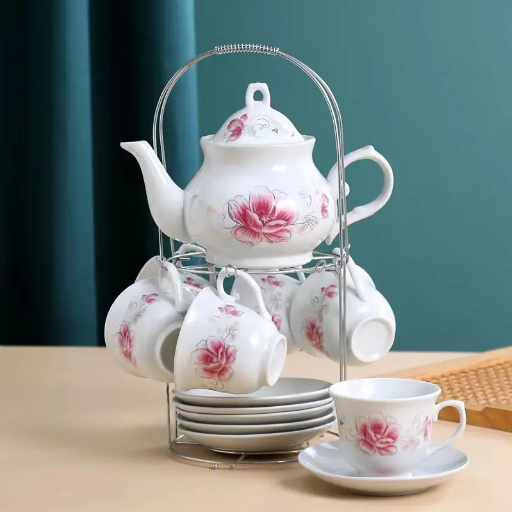
The teapot universe is surprisingly broad, and each type caters to a different brewing habit:
- Traditional ceramic pots, often porcelain or simple stoneware, hold heat like champions and never lose their decorative flair. Even when they’re quietly sitting on the counter, the delicate designs keep inviting you back for a look.
- All glass models flip that script by giving you a front-row seat to the leaves as they unfurl. This transparency is why they’re basically mandatory whenever somebody shows off a flowering tea.
- Swinging toward the tough side of the spectrum, cast-iron kettles are almost bomb-proof. They keep the temperature steady longer than you’d think, and most versions hide the raw metal under a colorful enamel shell.
- Stainless steel teapots never rust and clean up in a blink, which is why they pop up in so many offices and busy kitchens. Their mirror finish looks a touch futuristic, yet the actual sipping experience stays classic.
- Clay pots, especially the famous Yixing varieties, tell a different story altogether. The unglazed material drinks in whatever tea you brew, slowly hogging all that flavor, so the same pot basically gets locked to a single leaf type.
Picking the right one usually boils down to personal quirks. Some people chase eye candy, others want a workhorse, and a select few insist on the subtle magic only well-seasoned clay can deliver.
What are the Characteristics of Teapots Made of Various Materials?
|
Material |
Key Characteristics |
|---|---|
|
Glass |
Transparent, visually appealing, easy to clean |
|
Porcelain |
Elegant, retains heat well, quite fragile |
|
Ceramic |
Insulates heat, durable, wide design variety |
|
Cast Iron |
Excellent heat retention, highly durable, may need seasoning |
|
Stainless Steel |
Durable, rust-resistant, quick to clean |
|
Clay (Yixing) |
Enhances tea flavor, porous, absorbs tea essence |
|
Stoneware |
Thick walls, good insulation, highly durable |
|
Plastic |
Lightweight, affordable, less effective at retaining heat |
|
Copper |
Excellent heat conductivity, requires regular polishing |
|
Enamel-coated Metal |
Stylish, resistant to corrosion, maintains moderate heat retention |
|
Wood |
Natural aesthetic, poor heat retention, often decorative |
How to Choose a Modern or Elegant Tea Pot Design?
Choosing a teapot that feels both modern and elegant is never just a stylistic whim; it demands a careful mix of appearance and purpose. Around the house, geometric silhouettes in brushed stainless or clear glass seem to turn up everywhere. Those materials bounce light, feel sturdy in the hand, and slide right into an open plan kitchen without looking out of place. The word elegant, meanwhile, hints at slow-moving artisanship; think hand-laid blossoms or a clutch of copper pinstripes running up the neck. Smart designers hide ergonomic details within the style it takes only a tapered spout to keep drips off the tablecloth or a cork collar to spare fingers from heat. Catalogs from this season are thick with mixed-media pieces, bowls of white porcelain cradled in matte-black iron or translucent stoneware ringed by walnut. Even so, a personal checklist usually rules the day: hold enough tea, shed stains easily, and look just as good on the counter as in the living room.
How to Care for Your Wholesale Teapots?
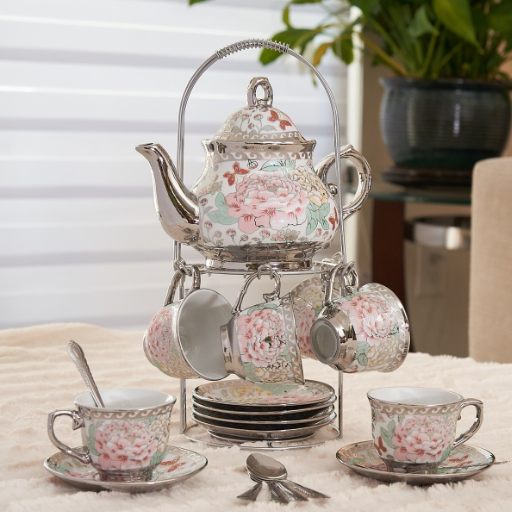
- Regular Cleaning: Give the teapot a brief rinse under warm tap water the moment it cools. The quick rinse stops any stray leaves from forming hard clumps, and a dab of mild dish soap on a soft sponge handles the deeper grit. Steer clear of steel wool or scouring pads rubbing grit in that coarse only invites scratches.
- Remove Stains: Fill the pot with a half-and-half solution of water and plain white vinegar, or a paste of baking soda and water, depending on what is at hand. Let the mixture sit for fifteen minutes, watch the discoloration lift, then rinse until the acid or baking soda taste is gone.
- Prevent Odors: Set the teapot upright with the lid removed after washing. Leaving it ajar permits air circulation that evaporates any lingering dampness and prevents musty smells.
- Proper Storage: Place the emptied teapot in a shelf that does not trap heat or direct sunlight. Stacking pots on top of one another, even when wrapped, risks impact damage that a casual drop would worsen.
- Material-Specific Care:
- Cast Iron: Cast iron teapots must be dried promptly and coated with a whisper of mineral oil to fend off rust blotches.
- Glass: Glass models cringe at thermal shock, so skip the boiling water if a cold draft is blowing through the room.
- Ceramic: Unglazed ceramic should never sit on a direct flame; inspect it for small chips after every second or third use.
Following these few routines transforms a fragile kitchen eclectic into sturdy, enduring tableware. Respect the vessel and, in return, it handles a thousand brews without fuss.
What is the Best Way to Clean Ceramic Teapots?
Ceramics demand careful handling; a single scrape can dull their shine forever. Rinse your teapot with warm water as soon as you finish pouring, and the everyday tannin stains will drift away before they bond with the clay. For routine cleansing, a soft sponge dipped in plain dish soap works best; grit and commercial cleansers can abrade the protective glaze in seconds. When a ring of tea refuses to budge, mix equal parts baking soda and water into a paste, apply it with a fingertip, and flush it out under cool running water. Some potters simply pour half vinegar and half tap water inside the pot; the slight sting of acid eats the crust and leaves no odor behind. After a final rinse, pat the inside and outside with a lint-free towel, because lingering moisture invites mold to take root in hidden seams. Once every few months, hold the pot up to the light and look for hairline cracks or missing chips; any fracture will cradle dampness and quietly ruin the clay.
How to Maintain Porcelain Teapots?
Properly cared for, a porcelain teapot retains its visual charm and brewing utility long after its first use. Routine maintenance is simple: warm water plus a drop of gentle, non-abrasive dish soap applied with a soft sponge is usually enough. Coarse scouring pads or harsh cleansers should be shelved since even the smallest grit can leave micro-scratches on the glaze. For more stubborn stains, submerging the pot in a paste of baking soda and water for thirty minutes will often lift discoloration and neutralize lingering odors.
Rapid shifts in temperature are porcelain’s worst enemy; the material expands and contracts unevenly, leading almost immediately to cracks. Before putting the teapot away, double-check that it is entirely dry; any trapped moisture opens the door to mold and unsightly marks. Lastly, carefully handle the piece; a simple bump against a countertop can chip the rim and compromise its look forever. Following these precautions allows the teapot to age gracefully while remaining hygienic and elegant.
Reference Sources
-
WebstaurantStore: Offers a variety of teapots in ceramic, glass, porcelain, and more, with wholesale pricing for bulk purchases.
-
Abbott Collection: Features a range of teacups, teapots, and teaware in various styles and colors.
-
Eight Ounce Coffee: Provides tea equipment, including teapots like KINTO and HARIO models.
-
Grosche Wholesale: Offers wholesale glass teapots, blooming tea, and smart tea makers.
-
Pito China: Specializes in bulk ceramic tea pots for events, hotels, and restaurants.
Frequently Asked Questions (FAQs)
Q: What materials are commonly used in wholesale teapots?
A: Wholesale teapots are commonly made from materials such as ceramic, porcelain, and bone china. Each material offers unique qualities in terms of aesthetics and functionality.
Q: How do I choose the right teapot for my tea time?
A: When choosing a teapot for tea time, consider the type of tea you serve. For example, green and white teas may require different brewing conditions than black teas. Additionally, look for beautiful designs that complement your decor.
Q: What is the difference between bone china and regular china in teapots?
A: Bone china is made with a higher percentage of bone ash, which makes it more durable, lightweight, and luxurious compared to regular china. It also often features intricate designs that enhance its beauty.
Q: Can I use glass teapots for serving tea?
A: Yes, glass teapots are excellent for serving tea as they allow you to see the beautiful colors of the tea as it brews. They are functional and add a touch of elegance to tea time.
Q: What are some popular styles of teapots for wholesale purchase?
A: Popular styles for wholesale teapots include traditional designs, modern lines, and luxury sets featuring intricate art. Look for options that include matching saucers for a complete tea service.
Q: Are there teapot sets that are suitable for restaurants?
A: Yes, many wholesale teapot sets are designed specifically for restaurants. These sets are typically more durable and can withstand frequent use while still providing a beautiful presentation for English tea service.
Q: How should I care for my ceramic and porcelain teapots?
A: To maintain the condition of your ceramic and porcelain teapots, hand wash them with mild soap and avoid abrasive materials. This will help keep them beautiful and functional for years to come.
Q: What are the benefits of using a luxury teapot set?
A: A luxury teapot set offers both aesthetic appeal and high-quality craftsmanship. These sets often serve as heirloom pieces that can be passed down through generations, providing a beautiful addition to your home.
Q: Can teapots be used for serving other beverages?
A: While teapots are traditionally used for tea, they can also be used to serve other beverages like herbal infusions or even coffee. Just be sure to choose the right teapot that complements the beverage you wish to serve.

